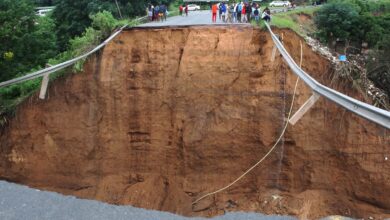Unavoidable Greenland ice melt to raise sea level by 10 inches: ‘Realistically, this figure will more than double’

Even if the world stopped burning fossil fuels this instant, the build-up of heat that they’ve caused in the atmosphere means Greenland’s ice melt will unavoidably raise global sea levels by at least 10 inches (27cm).
For the first time, glaciologists have determined what minimum ice loss will be from the Greenland Ice Sheet due to average global warming of 1.1 degrees Celsius over the past 150 years, and how it will elevate sea levels.
The Greenland ice sheet will “inevitably” lose 3.3 per cent of its current volume, or 110 quadrillion tonnes of ice, according to the scientists from the Geological Survey of Denmark and Greenland (GEUS).
The research, conducted on the climate in the Arctic from 2000 to 2019, reveals “the absolute lower bound for what’s to come”.
The study was published on Monday in the journal, Nature Climate Change.
“It is a very conservative rock-bottom minimum. Realistically, we will see this figure more than double within this century,” Professor Jason Box, the lead author, said in a statement.
“In the foreseeable scenario that global warming will only continue, the contribution of the Greenland Ice Sheet to sea level rise will only continue increasing. When we take the extreme melt year 2012 and take it as a hypothetical average constant climate later this century, the committed mass loss from the Greenland Ice Sheet more than doubles to 78cm.”
The study didn’t rely on computer modelling to make forecasts which can be uncertain. Instead, it’s based on ice measurements from satellite data, and the scientists’ real-world observations of the ice sheet.
The study solely examines the impact of glacial melt from Greenland, and not other polar regions. Research published earlier this month found that on the other side of the planet, the collapse of Antarctica’s “sleeping giant” could cause planetary-scale change in the coming centuries.
Prof Box noted that while the team’s unconventional research method has given new insight into the volume of ice loss, the downside is that it lacks a detailed timeframe.
“In order to get the figure that we have, we had to let go of the time factor in the calculation,” he said. “But our observations suggest that most of the committed sea level rise will occur this century.”
Researchers studied the ice sheet’s “snow line”– the boundary between what melts and what doesn’t during summer months. The snow line changes from year to year, depending on whether the year is hotter or colder.
During winter, falling snow used to rebuild the ice sheet, keeping it in balance after summer melting. However the climate crisis has upended this process.
“I think starving would be a good phrase,” for what’s happening to the ice, co-author and glaciologist, Dr William Colgan, told the Associated Press.
The inevitable 10-inch loss is more than twice what scientists have previously predicted. The latest, 2021 assessment from the United Nations’ Intergovernmental Panel on Climate Change, the global authority on climate science, forecast two to five inches (6 – 13cm) for expected sea level rise due to melt from the Greenland ice sheet by the end of the century.





